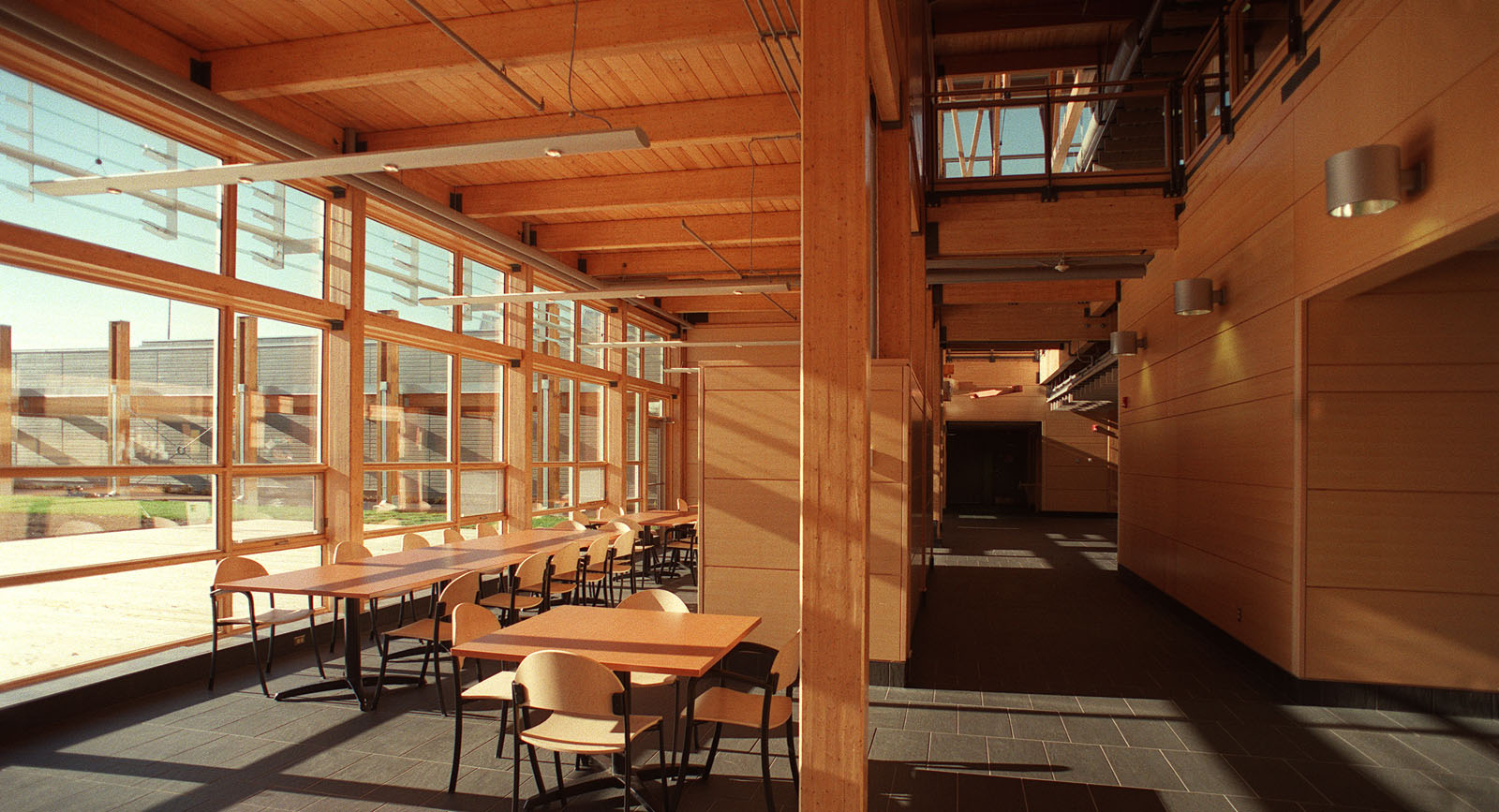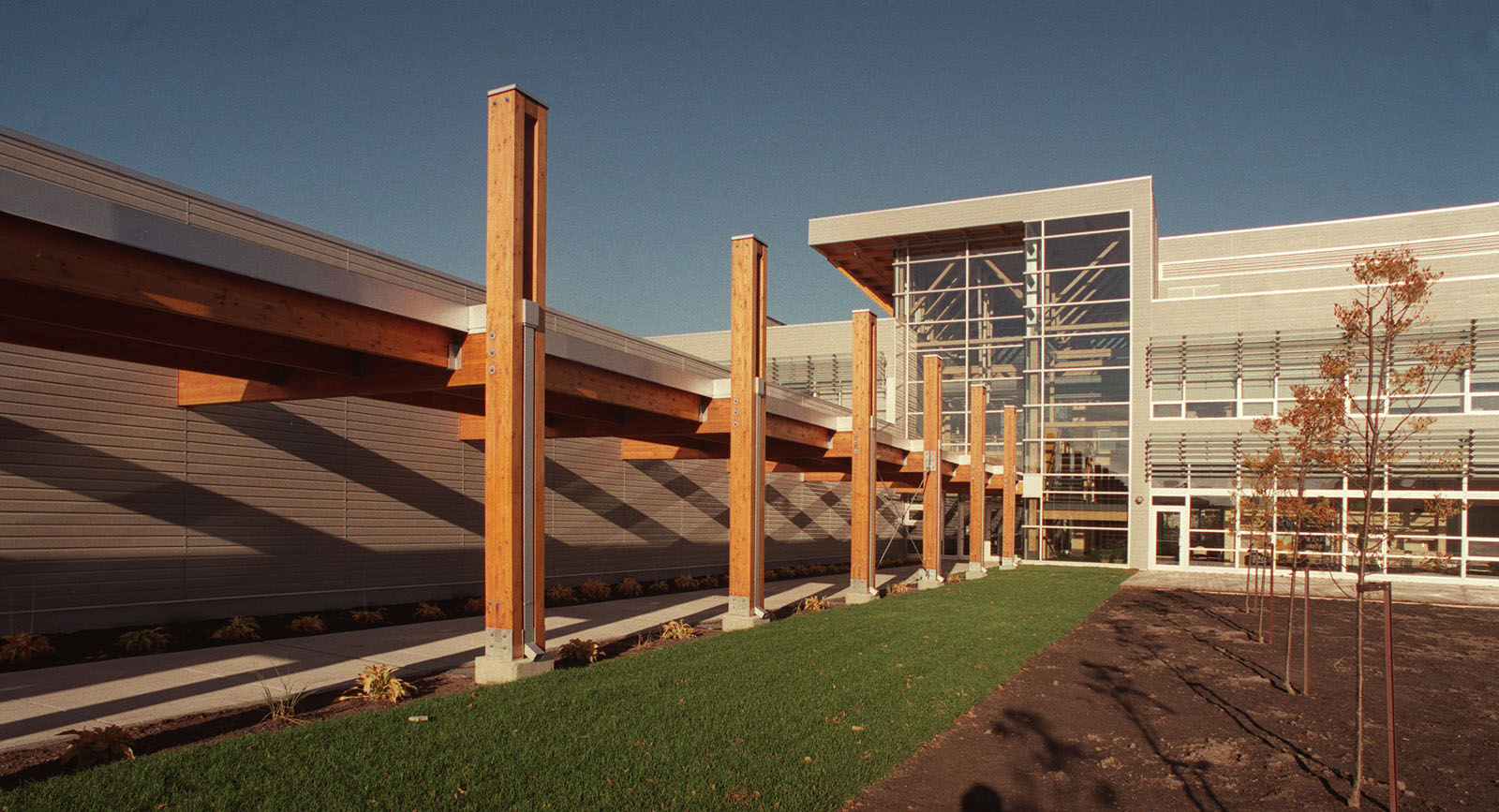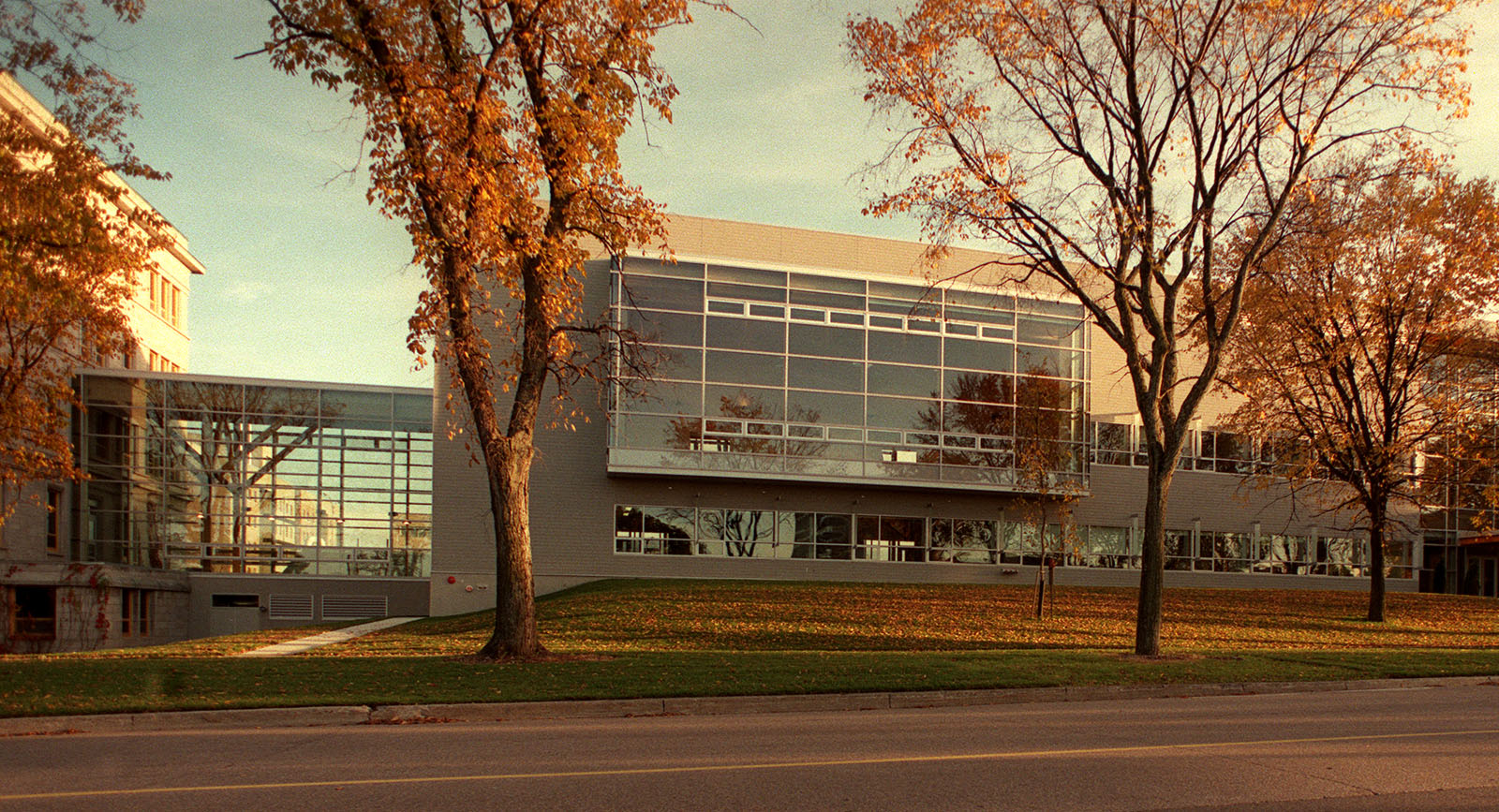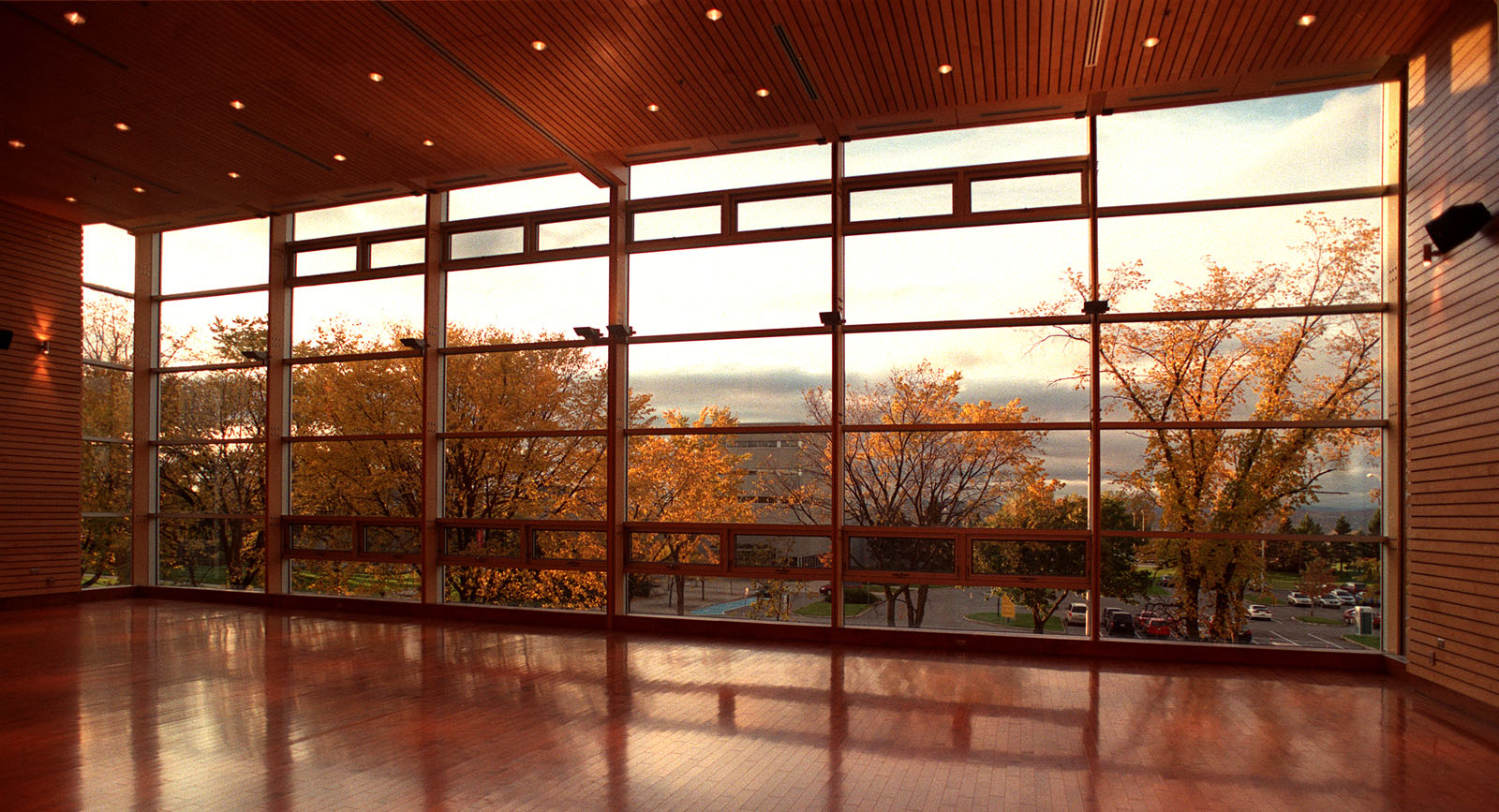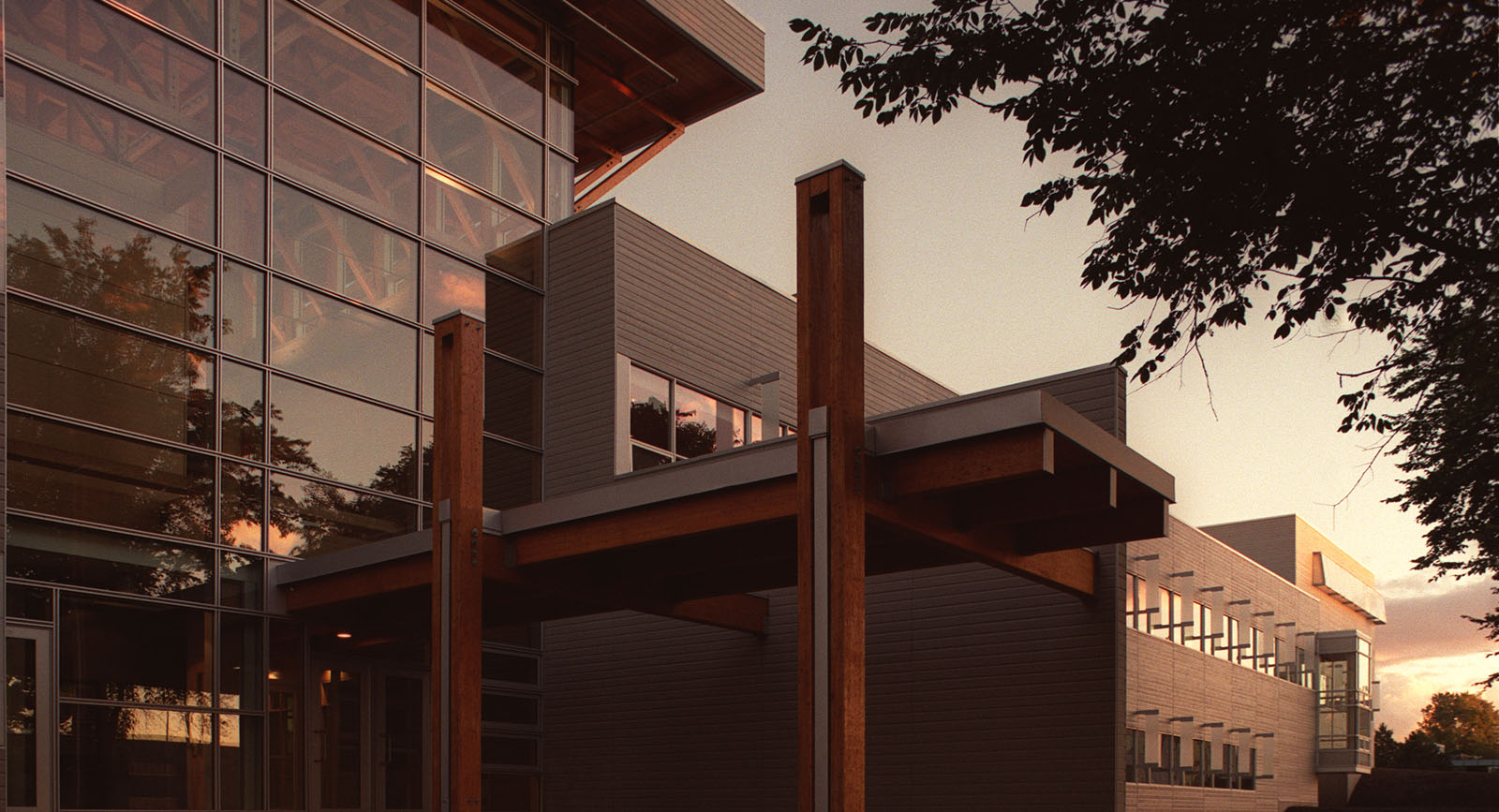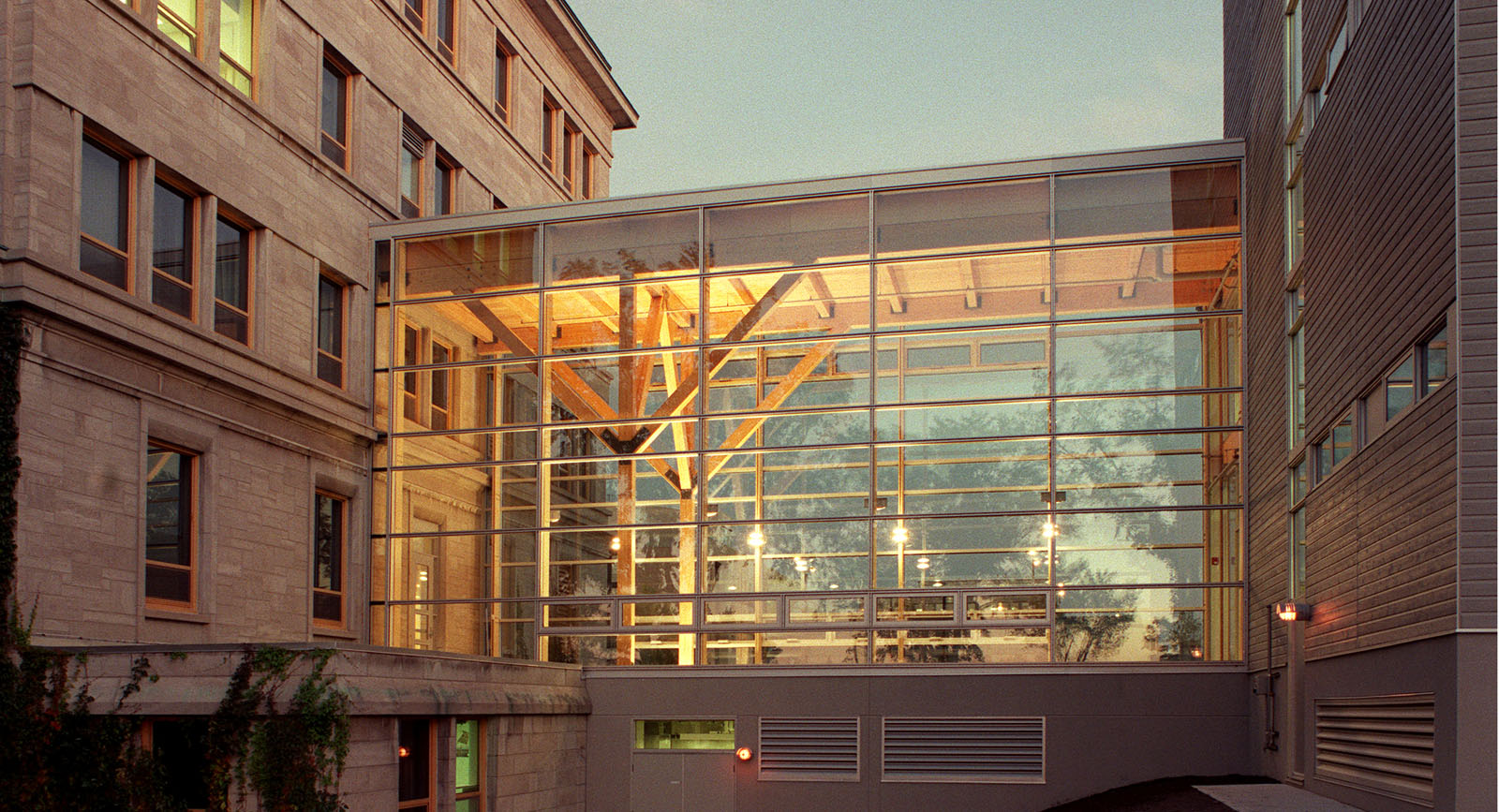Gene H.-Kruger Pavilion
Université Laval

Category
Education, sports and leisure
Client
Université Laval
Location
Quebec (Québec) / Canada
Date
2004
Budget
22,2 M$
Area
7 400 m²
Credits
Paul Gauthier + Gallienne Moisan architectes (now ABCP architecture)
Photos © Laurent Goulard
Awards and mentions
CONTECH 2004 Awards :Novative Practice in Sustainable Development
FERDIE Interior Award, Sustainable Development category
Prix d’excellence de l’Ordre des Architectes du Québec (OAQ)
Mérite d’architecture de la Ville de Québec
Excellence Award CECOBOIS, category Institutional Building, more than 600 s.m.
Excellence Award CECOBOIS, category Concept and Architectural Details
Description
The expansion of the Gene H. Kruger Pavilion housing Université Laval’s Faculty of Forestry and Geomatics adds nearly 7,400 m2 to the building on two floors and is divided into two sections, a classroom area and a second section for laboratories and workshops.
The project was optimized from a sustainable development perspective with the help of the GRAP research group on physical environments at Université Laval’s School of Architecture. The environmental decisions were validated using the LEED building assessment system.
A series of bioclimatic strategies were incorporated into the design to enable students and staff to better control their work environment and reduce energy consumption. The general orientation and configuration of the building are designed to optimize surrounding microclimates, natural lighting, passive cooling, and solar heating.
The building’s massing protects entrances against the prevailing winds and forms a partially closed south-facing courtyard, creating a microclimate suitable for outdoor activities. A partially heated glass passageway connects to existing buildings to the east while semi-protected walkways lead to campus avenues to the north and south. The building therefore provides an alternative model on a campus composed of scattered buildings that are exposed to the wind and reached mainly through underground corridors.
